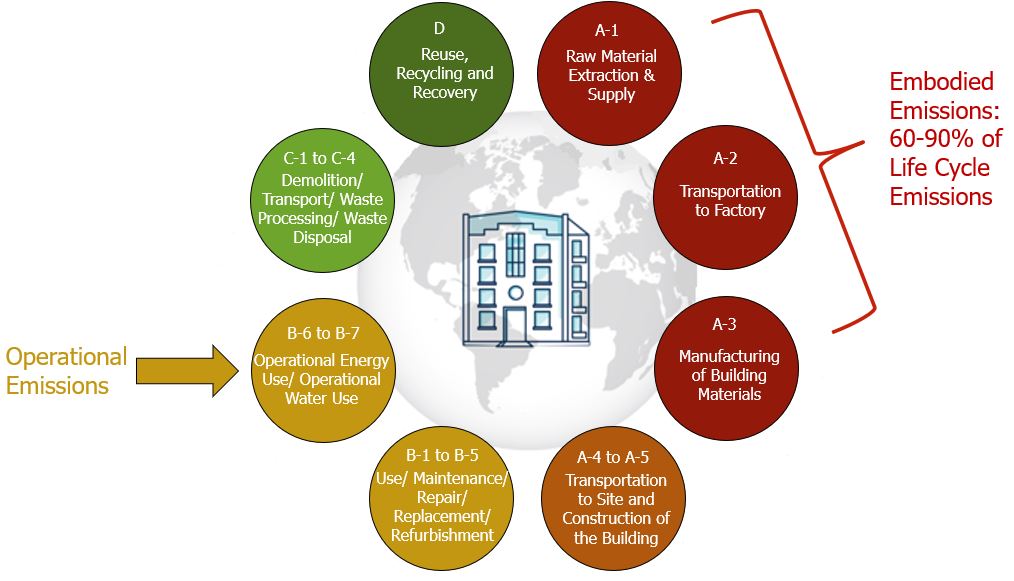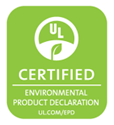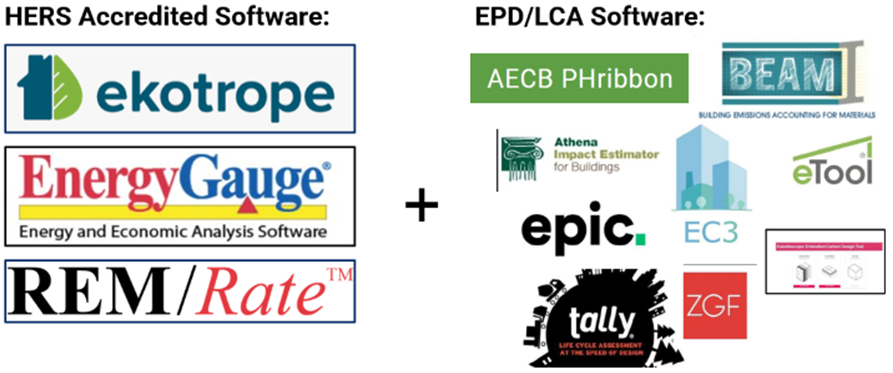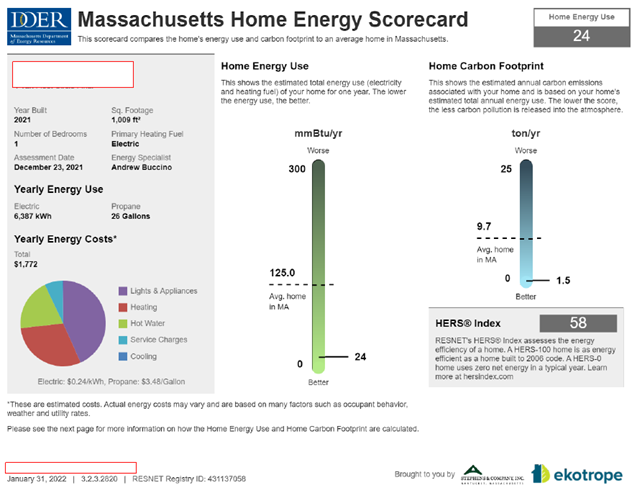FOR THE BUILDING SCIENCE ENTHUSIASTS AMONG US:
WHY RESNET?
RESNET Certified Home Energy Rating System (HERS) Raters are uniquely poised to deliver the data needed to begin Materials Embodied Carbon Tracking in the US. After all, the HERS Index is already the gold standard for home energy assessments in the US residential energy market. Every HERS Rating is a third-party verification of a home's energy efficiency and the rigorous Quality Assurance oversight providers consistency across the national market. If we don't take the lead on measuring Embodied Carbon, someone else might, and they may not understand the significance of the role that HERS raters can play.
WHY NOW?
As of 2017, building operations accounted for 28% of global carbon emissions. An additional 21% came from the production of the building materials themselves. Combined, operational and material emissions accounted for almost half of the global carbon emissions! Our industry has done exceedingly well at reducing operational emissions. It's time to turn our sights to reducing the emissions associated with materials, as well.
BUILDING MATERIALS LIFE CYCLE ANALYSIS:
For this initiative, we are focusing on the embodied carbon emissions from the first three phases of the life cycle of building materials: (A1-A3).

Currently, the HERS Index focuses on measuring and reducing operational emissions (B-6 to B-7). And we've done a fantastic job reducing those emissions! However, the emissions from A1- A3 account for 60-90% of the emissions associated with the full life-cycle of a building.
UP-FRONT CARBON SAVINGS
Embodied carbon emissions are “low hanging fruit” of up-front carbon savings that we don’t have to wait decades to realize. Operational emissions accrue on top of this baseline.

SIGNIFICANT DATA OVERLAP:
HERS Raters already collect a lot of data points in order to produce detailed reports defining Operational Emissions for each HERS Rating. About 80% of those data points overlap with the data points needed to calculate Material Embodied Carbon Emissions.
EPDS HELP SET DEFAULTS:
Where data points are missing, Environmental Product Declarations (EPDs) can help set defaults until more granular data is available. EPDs are third-party verified documents based on product-specific Life Cycle Analysis models, written in compliance with rules from the International Standards Organization (ISO). They provide a standard of rigor and consistency needed to trust the declared environmental impact of a product.

SOFTWARE INTEGRATION:
The data from any of the three RESNET accredited HERS rating software systems can be imported as XML data into the EPD/LCA reporting tools. This allows us to calculate the embodied carbon alongside the operational carbon, with the tools as they exist today.

DIAL IN ON ANNUAL/OPERATIONAL AND EMBODIED CARBON TARGETS:
With a modest funding investment, it will be possible to actually integrate the software into one tool, so that designers, builders, and homeowners will be able to dial in on embodied carbon targets just as we do for annual/operational targets. We offer this Massachusetts State DOER Home Energy Scorecard as an example of what those two indexes may look like side-by-side.

BASELINE:
Also with a modest funding investment, we will be seeking the opportunity to conduct a baseline study for the Northeast, which we hope will be replicated in other regions of the country. This will provide a snapshot of the current status of embodied carbon in new construction against which future reductions can be compared.
REFERENCE HOME:
The HERS Index has a particular type of baseline called the Reference Home. Just like other RESNET Indexes, an Embodied Carbon Index could result from dividing total embodied carbon values from the Rated Home by the total embodied carbon values from the Reference Home.


INDEX INTEGRATION:
However, it is not possible to simply add the annual / operational emissions to the embodied carbon emissions because the former is an exponential curve and the latter is a linear curve. In order to combine and therefore be able to directly compare the two, it's necessary to first convert both into Carbon Damage to the Atmosphere, measured in ton-years.


A NEW STANDARD:
The residential marketplace is not currently served by any comprehensive carbon standard. Establishing one would create a scalable, vetted framework for how to measure Materials Embodied Carbon, which would provide consistency for training, accreditation of professionals and tools, and quality assurance oversight.
PROGRAM INCENTIVES:
This standard could be used by municipalities, program administrators and other stakeholders as a platform for program incentives. This would allow us to not only measure both energy and carbon efficiency, but also to provide verification of both energy and carbon savings, and even carbon storage, for a variety of programs like energy efficient mortgages (EEMs), the ENERGY STAR Homes Program, and others at the state and municipal level.
WORKFORCE DEVELOPMENT:
This is a significant workforce development opportunity for the HERS Rating Industry. Raters are flexible, versatile, and capable of expanding the scale and scope of our work. We are already developing new markets in relation to the HERS H2O program and the new CO2 Grid Decarbonization initiative. Embodied Carbon is a natural next step and will encourage workforce evolution and continued relevancy for current HERS Raters, while inspiring the next generation to become HERS Raters.
PLEASE JOIN US!
We have less than 10 years to make significant strides in relation to reversing climate change. Embodied carbon is a critical piece of the puzzle. We trust that by doing our part to move this piece, it will help others move related pieces simultaneously.
- Please share the Massachusetts 100-Home Study with your network!
- If you would like to receive special updates about actions you can take to support the next steps for Embodied Carbon, please email Betsy at betsy@nehers.org so that we can add you to the list of supporters.